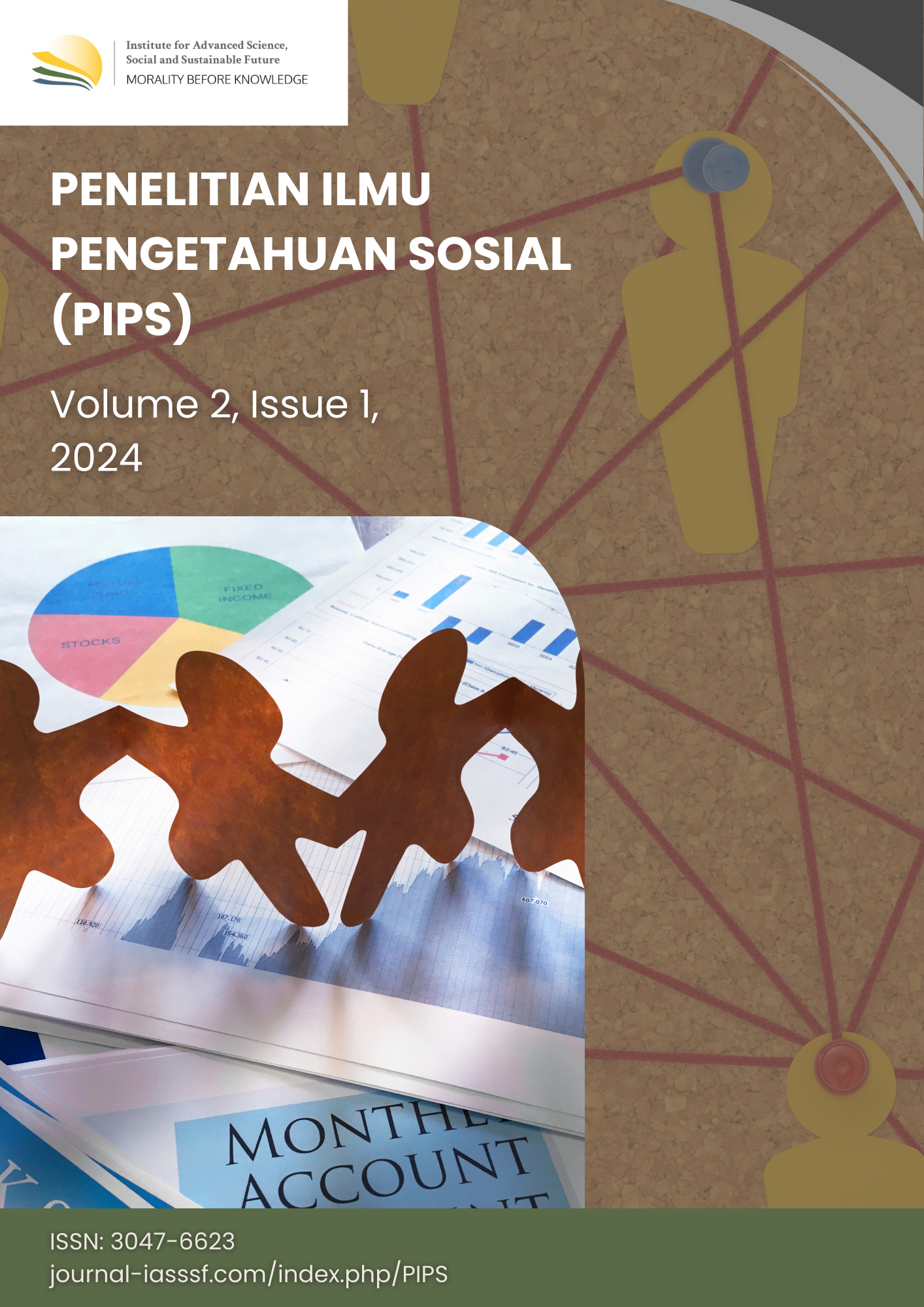The influence of the card sort method on students' learning outcomes in fiqh class
DOI:
https://doi.org/10.61511/pips.v2i1.2025.1782Keywords:
illegal online loans, student financial stress, academic persistence, digital lending, financial exploitationAbstract
Background: The Card Sort method, a student-centered active learning strategy, has been widely studied for its effectiveness in improving understanding and retention of information. This study investigates the impact of the Card Sort method on the learning outcomes of Fiqh students at MI Ma’arif NU 02 Bantarbarang Purbalingga. The research aims to determine whether the implementation of this method results in significant improvements compared to traditional teaching approaches. Methods: This research employs a quantitative approach with a quasi-experimental design, specifically the Nonequivalent Control Group Pretest-Posttest Design. The study population consists of all sixth-grade students, with a purposive sampling technique selecting Class VI A as the experimental group and Class VI B as the control group. Data were collected through questionnaires and tests, and analyzed using simple linear regression and the Independent Sample T-Test in SPSS version 23. Findings: The results indicate that the Card Sort method significantly influences students’ Fiqh learning outcomes. The experimental group, which used the Card Sort method, achieved an average final test score of 79.40, while the control group, which relied on conventional methods, scored 75.40. Statistical tests show a p-value of 0.000 (< 0.05), confirming the significant effect of the Card Sort method. Additionally, the T-Test results (t = 8.448 > 2.010) further support the rejection of the null hypothesis (H0), proving that the method enhances student learning outcomes. Conclusions: The study concludes that the Card Sort method effectively improves student learning outcomes compared to conventional methods in Fiqh education. Students in the experimental group demonstrated higher engagement, better understanding, and improved test performance. To further optimize learning outcomes, students should be encouraged to actively participate in class activities, while teachers should implement creative teaching strategies and diverse instructional media. Novelty/Originality of this Article: This study contributes to the field of active learning strategies in religious education, specifically in Fiqh learning, which has been less explored in previous studies.
References
Armai, A. (2002). Pengantar Ilmu dan Metodologi Pendidikan Islam. Ciputat Pers.
Arikunto, S. (2010). Research procedure a practical approach. Rineka Cipta.
Dantas, L. A., & Cunha, A. (2020). An integrative debate on learning styles and the learning process. Social Sciences & Humanities Open, 2(1), 100017. https://doi.org/10.1016/j.ssaho.2020.100017
Gunawan, A. M. (2015). Statistik Penelitian: Bidang Pendidikan Psikologi dan sosial. Parama Publishing.
Hamdani. (2011). Strategi Belajar Mengajar. Pustaka Setia.
Hartono. (2010). Research Methodology. Zanafa Publishing.
Irwani, M., & Saefuddin. (2018). Pelaksanaan Pembelajaran Fiqih di Madrasah An Najah Desa Haur Kuning Kecamatan Beruntung Baru Kabupaten Banjar. Jurnal Pendidikan Madrasah, 1(1). https://dx.doi.org/10.47732/darris.v1i1.47
Kerimbayev, N., Umirzakova, Z., Shadiev, R., Abdykarimova, S., & Yermekbayeva, L. (2023). A student-centered approach using modern technologies in distance learning: A systematic review of the literature. Smart Learning Environments, 10(61). https://doi.org/10.1186/s40561-023-00280-8
Lailiyah, A. M., Romelah, & Mardiana, D. (2023). Implementation of the card sort method for Hajj material in fiqh learning. Edukasi: Jurnal Pendidikan Islam, 11(2). https://doi.org/10.54956/edukasi.v11i2.475
Mohajan, H. (2017). Two criteria for good measurements in research: Validity and reliability. Annals of Spiru Haret University, 17(4), 56–82. https://mpra.ub.uni-muenchen.de/83458/
Nanda, Y., & Himawanto, W. (2017). Statistika Pendidikan. Deepublish.
Nani, R. (2013). Efektifitas Strategi Critical Incident terhadap Belajar Mata Pelajaran Fiqih. UNSIQ.
Nurhidayati, T., Kurniasih, A., & Rofiq, M. N. (2024). Planting character education values through the moral education perspective of Syeh Ja’far Al-Barzanji. As-Salam: Jurnal Studi Hukum Islam & Pendidikan, 13(2), 145–169. https://doi.org/10.51226/assalam.v13i02.729
Pratiwi, A. Y. (2016). Penerapan Strategi Partice Rehearsal Pairs (Praktek Berpasangan) Terhadap Hasil Belajar Siswa Kelas II Pada Mata Pelajaran Fiqih di Madrasah Ibtidaiyah Daarul Aitam Palembang. UIN Raden Fatah Palembang.
Putri, F. A. K., Sorohiti, M., & Ariebowo, T. (2023). Teaching English using flashcards to improve elementary school students’ vocabulary. Journal of Foreign Language Teaching and Learning, 8(2), 198–213. https://doi.org/10.18196/ftl.v8i2.21350
Radović, S., Seidel, N., Menze, D., & Kasakowskij, R. (2024). Investigating the effects of different levels of students' regulation support on learning process and outcome: In search of the optimal level of support for self-regulated learning. Computers & Education, 215, 105041. https://doi.org/10.1016/j.compedu.2024.105041
Saebani, A. B., & Januri. (2008). Fiqih Ushul Fiqih. CV Pustaka Setia.
Silberman, M. L. (2011). 101 ways to make training active. John Wiley & Sons.
Sudaryono, S., Rahardja, U., Aini, Q., Graha, Y. I., & Lutfiani, N. (2019). Validity of test instruments. Journal of Physics: Conference Series, 1364(1), 012050. https://doi.org/10.1088/1742-6596/1364/1/012050
Sugiyono, S. (2011). Qualitative quantitative research methods and R&D. Alfabeta.
Suyono. (2018). Analisis Regresi untuk Penelitian. Deepublish.
Syaiful, D. B., & Aswan, Z. (2014). Strategi Belajar Mengajar. Rineka cipta
Tirtarahadja, U. & La Sulo, SL. (2005) Pengantar Pendidikan. Rineka Cipta http://dx.doi.org/10.31237/osf.io/e98dp
Walter, Y. (2024). Embracing the future of artificial intelligence in the classroom: The relevance of AI literacy, prompt engineering, and critical thinking in modern education. International Journal of Educational Technology in Higher Education, 21(15). https://doi.org/10.1186/s41239-024-00448-3
Yusuf, F., Anitra, R., & Setyowati, R. (2022). Pengaruh Model Pembelajaran Card Sort Terhadap Hasil Belajar PPKn Siswa Sekolah Dasar. Pedagogik Journal of Islamic Elementary School, 5(1), 1–12. https://doi.org/10.24256/pijies.v5i1.2574
Zaini, M. (2009). Pengembangan Kurikulum: Konsep Implementas, Evaluasi dan Inovasi. Teras.
Downloads
Published
How to Cite
Issue
Section
License
Copyright (c) 2025 Adinda Wulandari, Nurkolis

This work is licensed under a Creative Commons Attribution 4.0 International License.














